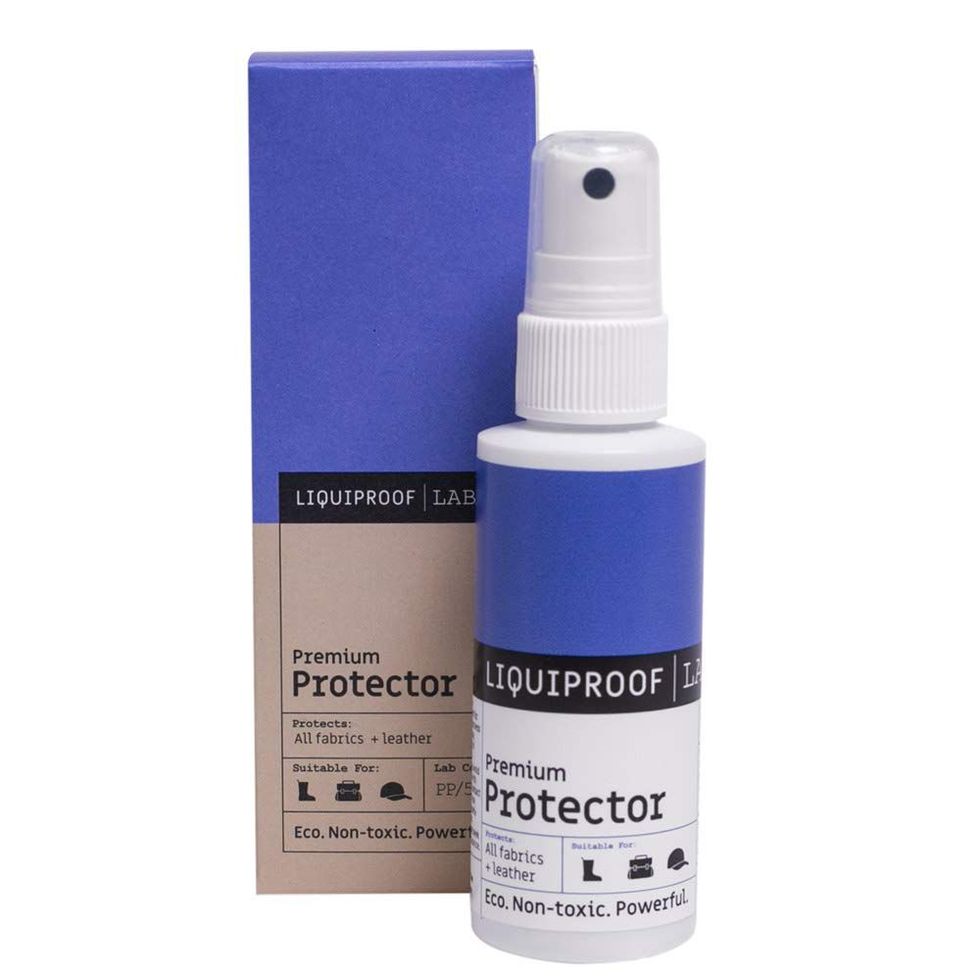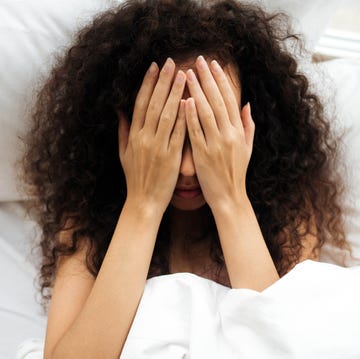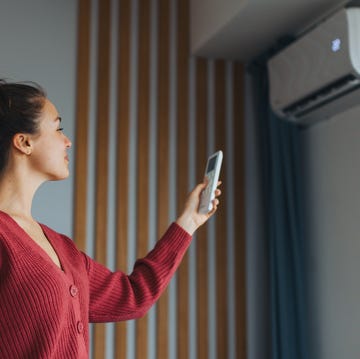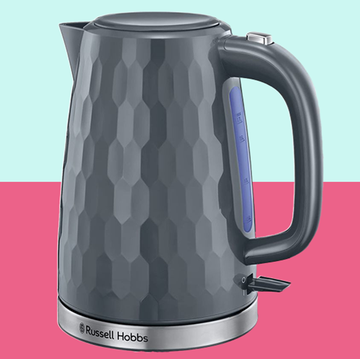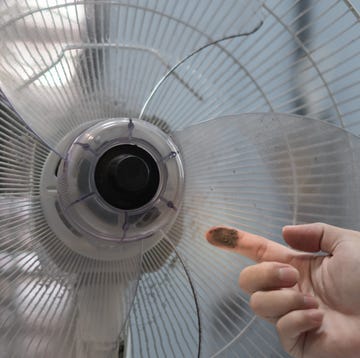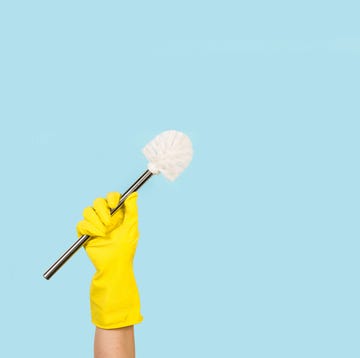“Take off your shoes!!” Something I heard throughout my childhood. At the time, this habit seemed harmless – what’s the big deal, it’s just a bit of dirt, right? Nowadays, I fully sympathise with my mum; in fact, I’m surprised I got away with this as much as I did.
Wearing shoes indoors is a hot topic for debate. While caked-on muddy shoes are a definite no-no, the line gets blurred with everyday dust and debris – which doesn’t leave an obvious mess behind.
Some of us have a definitive rule of no shoes allowed, while others are more relaxed, especially when guests come to visit, or you’ve forgotten something and just need to pop back in. So where do you stand? This feature aims to settle the debate once and for all.
What to read next
1. The dirt is still there – even if you can’t see it
Firstly, your shoes will tread in residue from the outside, regardless of whether you can see it or not. At less obvious levels, dirt can blend in with our carpets and hard floors, going unnoticed until it builds up to more severe levels. But, even if the dirt truly is minimal, there will still be traces left behind, especially if you walk on carpet, which will in essence brush the dirt off your soles and leave it trodden into the fibres.
According to Dr. Primrose Freestone, microbiologist at the University of Leicester: “Shoe soles might look clean, but looks can be deceiving. Outdoor shoes can carry indoors bacteria, fungi, viruses, animal faeces, allergens such as pollen, and toxic chemicals such as pesticides all of which can be linked to quite serious health concerns.
“It has been shown the weave of carpets and rugs may act as a sink for a whole range of shoe allergens, faecal droppings, pollen, bacteria, viruses, mould, dirt and dust. These carpet pollutants may become airborne during vacuuming or even just walking on the carpet which can be a problem for those with respiratory illness such as asthma.”
Freestone recommends vacuuming regularly to remove pollen, faecal matter and some fungal spores (as well as everyday dirt and dust). But for carpets, steam cleaning or carpet cleaning with an appropriate detergent will be necessary.
2. Small stones can damage your hard floors
Ever looked on the underside of your shoe and noticed small stones embedded between the grooves? We pick these up as we walk around and then carry them home. After which they come loose, free to be scratched around when we next vacuum or mop. Even if they stay lodged in the shoe, they’re liable to do damage as we walk around too.
Always use a doormat before entering your home to help dislodge small stones and debris. Give them a visual inspection before walking them in – it’s good practice to do this in case you’ve walked in chewing gum or dog poop too.
When small stones invariably end up indoors, sweep them up with a dustpan and brush rather than trying to vacuum them up. As mentioned earlier, this can end up dragging them along and scratching your floors, plus it won’t do your vacuum any good!
3. Heels can damage the surface too
Even if your shoes are spotless, the type of shoe you wear can still do some damage. Stiletto heels in particular focus a lot of weight into a precise point and are liable to scuff your floors as a consequence. And shoes which feature spikes or studs on the underside, such as golf shoes and football shoes, can leave damage behind too.
4. Can spread smells around the home
On top of the additional dirt you’re walking in, leaving your shoes on can spread unwanted smells around the home – depending on what you’ve unknowingly walked in. Animal poop is the usual culprit here, but other unwanted smells such as sick and bin juice can be prominent too. Every time I take my bins out, I look out for trails of ‘bin juice’ leading from the building!
GHI Tip: Looking to get rid of unwanted smells from your carpet? Sprinkle bicarb over the surface using a sieve to break it up, then leave overnight and vacuum away in the morning. For large amounts of bicarb, check your vacuum is suitable with the manufacturer first.
These types of stain are (hopefully) few and far between, but puddles are a regular occurrence in the UK. If you walk damp shoes into your home, as well as treading in the dirt, you’re spreading moisture across your carpet and hard floors. This makes staining much more likely and encourages mould growth in your carpets too.
5. Can spread pests and viruses
Shoes can carry in more than we bargained for. Certain pest eggs can hitch-hike on the underside and be introduced to our homes unknowingly, including the likes of carpet moths and worms. According to Adam Hart, Professor of Science Communication at the University of Gloucestershire and a Fellow of the Royal Entomological Society (that’s the scientific study of insects):
“Shoes are definitely a way for potential problems to enter our home. Small bits of soil (and worse...) can harbour the eggs or larvae of all kinds of creatures as well as bacteria and fungi. Most of the time it probably isn't a big problem but it still makes sense not to wear outside shoes inside the house.”
Depending on what we’ve walked in, viral infections are a possibility too. And if you’ve got young children playing on the floor, who inadvertently put their hands into their mouths, it’s easily done. Freestone continues:
“Bacteria capable of causing infection found on shoes includes Listeria monocytogenes, methicillin-resistant Staphylococcus aureus (MRSA), Enterococcus faecalis, Clostridium difficile, Escherichia coli, and viruses such as Covid-19, norovirus and whatever pathogen was in the trace of dog or bird faeces you did not see when you walked in it. Touching the shoe that carries these pathogens could lead to infection if hands are not washed after the shoe contact.”
What’s wrong with bare feet?
However, if the alternative is bare feet, that’s not much better either. Sweat and bodily oils (not to mention the potential smell) will be spread across your floors. And if there’s any viral infections, such as verrucas, this can spread via your floors too.
Freestone says: “Our bare feet are home to a microscopic rainforest of bacteria and fungi with between 100 to 10, 000, 000 microbial cells per square cm of skin surface. Feet can be a host for up to 1000 different bacterial and fungal species.
“The foot also has a more diverse range of fungi living on it than any other region of the human body. This means those foot microbes will be placed on your clean floor or carpet. If your microbially rich foot also has a virus infection such as a verruca, the verruca virus will also be deposited on the floor. A verruca (plantar wart) is caused by the human papillomavirus which is highly contagious, so walking barefoot is not recommended unless you want to infect others with your virus.”
So there you have it, shoes worn indoors equals a less-hygienic home, complete with scuffs, scratches and stains. This habit guarantees unseen bacteria to be trekked throughout your home, potentially encouraging mould, pests and unwanted smells. At the very least, it means your floors will require cleaning more regularly, with a vacuum and mop or a carpet cleaning machine.
But, bare feet are a no-go in the home too if you want to avoid the above. Socks provide a layer of protection in these instances. Or if you’ve got guests visiting, there’s the option of having washable slippers at the ready for added comfort and to safeguard your floors.









